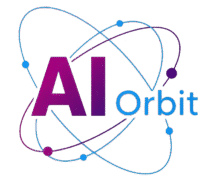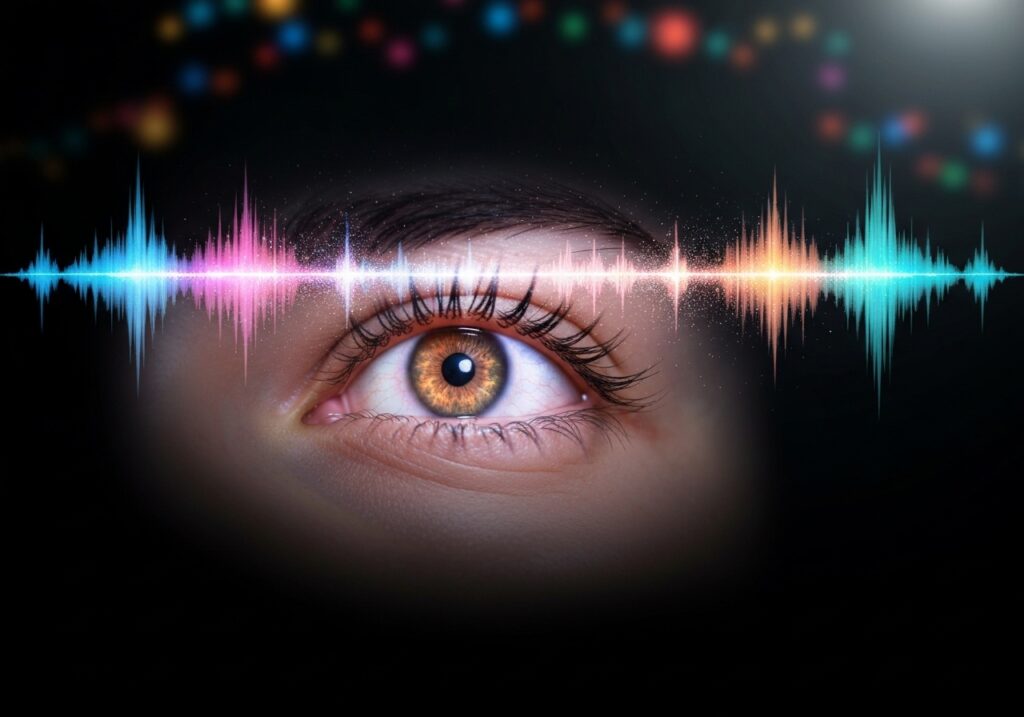A NEW DAWN: HOW AI IS RESTORING VOICES FOR THOSE WITH ALS
The ability to speak, to share thoughts, feelings, and memories, is fundamental to human connection. For individuals battling Amyotrophic Lateral Sclerosis (ALS), a cruel neurodegenerative disease, the progressive loss of muscle control often robs them of this most intimate form of expression. Yet, in a remarkable testament to human ingenuity and technological advancement, artificial intelligence (AI) is now offering a profound solution: the restoration of a person’s unique voice. This groundbreaking development is not just about technology; it’s about reclaiming dignity, fostering connection, and giving hope where it was once fading.
UNDERSTANDING ALS: THE SILENT STRUGGLE
Amyotrophic Lateral Sclerosis, commonly known as Lou Gehrig’s disease, is a progressive neurodegenerative condition that affects nerve cells in the brain and spinal cord. These motor neurons control voluntary muscle movement, and as they degenerate, they lose the ability to send signals to the muscles. This leads to muscle weakening, atrophy, paralysis, and ultimately, the inability to speak, swallow, and breathe.
THE DEVASTATING IMPACT OF VOICE LOSS
One of the most heart-wrenching consequences of advanced ALS is dysarthria, or difficulty speaking, which often progresses to anarthria, the complete inability to articulate words. Imagine having a vibrant mind, full of thoughts, humor, and love, trapped within a body that can no longer convey them. The isolation that can arise from this communication barrier is immense, impacting not only the individual but also their families and caregivers. While assistive communication devices have existed for years, they often relied on generic synthetic voices, which, while functional, lacked the personal touch—the unique cadence, tone, and inflection that makes a voice truly “you.” The psychological toll of losing one’s unique vocal identity cannot be overstated.
ALS IN THE UNITED STATES: KEY STATISTICS
According to estimates from the Centers for Disease Control and Prevention (CDC), approximately 30,000 people in the United States are currently living with ALS. Tracking the disease can be challenging due to its varied progression and diagnostic complexities. For most cases, no singular cause has been identified, though research continues to explore potential links, including genetic predispositions, environmental exposures, and dietary factors. The absence of a cure makes managing symptoms and improving quality of life paramount for patients and their care teams.
THE AI REVOLUTION IN VOICE RESTORATION: A PERSONALIZED BREAKTHROUGH
The advent of sophisticated artificial intelligence has opened unprecedented avenues in healthcare, particularly in assistive technology. For Debbie Lopez, a 39-year-old patient diagnosed with ALS in 2019, AI offered a lifeline to her lost voice. Her journey, supported by the dedicated team at Monroe Community Hospital (MCH) in Rochester, New York, serves as a powerful illustration of this transformative power.
THE GENESIS OF A NEW VOICE
Years before her voice fully succumbed to ALS, Debbie had the foresight to start a YouTube channel called “Living with Lemons.” Her intention was to document her health journey, raise awareness about ALS, and offer comfort to others facing similar challenges. Little did she know that this digital diary would become the very source of her voice’s rebirth. Speech pathologist Jaime Spencer, who works with Debbie at MCH, explained the pivotal role of this channel: “We were able to get her voice from using her YouTube channel, and from there they were able to clone anything that she wants to say.”
This process, often referred to as “voice banking” or “voice cloning,” involves sophisticated AI algorithms analyzing existing audio recordings of a person’s speech. The AI learns the unique characteristics of the individual’s voice—its pitch, timbre, rhythm, and intonation. Once the model is trained, it can then generate new speech in that person’s voice based on typed text. For Debbie, her extensive YouTube content provided the rich dataset needed for the AI to accurately replicate her distinctive vocal qualities. The technology that brings back voices like Debbie’s is part of a larger field where AI can generate various forms of audio, enabling innovations like a free AI audio generator for creative projects or assistive communication.
THE EMOTIONAL MOMENT OF RECONNECTION
The profound impact of this technology was vividly captured in a video shared by MCH. It shows Debbie Lopez breaking into a genuine smile, her face lighting up with a mix of surprise and pure joy, as she hears her own voice emanating from the device, saying, “Hi, I am Debbie Lopez.” This moment encapsulates the core benefit of AI voice restoration: it’s not just about producing sounds; it’s about returning a fundamental part of a person’s identity. As Spencer profoundly articulated, “This new software and this new technology has been amazing because it allows patients and individuals to preserve some of the most intimate parts of them and what makes you you, is your voice.” Through her AI-generated voice, Debbie powerfully articulated her resilience: “Even if I can’t make a sound, I still have a voice.”
THE BRIDGE TO COMMUNICATION: EYEGAZE TECHNOLOGY
While AI provides the voice, another crucial technology enables patients like Debbie to control what that voice says: the Eyegaze device. This remarkable assistive tool allows individuals with severe motor impairments to communicate, control their environment, and interact with the digital world using only their eyes.
HOW EYEGAZE DEVICES WORK
The Eyegaze system employs specialized cameras that track the precise movements of a user’s eyes. By focusing their gaze on different parts of a monitor, patients can select letters, words, popular phrases, or pre-set commands displayed on a screen. The device then interprets these eye movements as input, allowing them to type messages, surf the web, or, in Debbie’s case, direct her cloned AI voice to speak. An MCH spokesperson elaborated, “Cameras on the device track her eye movements and she can look at different parts of her monitor for either letters, words, or popular phrases or presets she has on her communications device.” This seamless integration of eye-tracking with AI voice synthesis creates a comprehensive and intuitive communication system, transforming frustration into fluid expression.
THE BROADER SPECTRUM OF AI IN HEALTHCARE
Debbie’s story is a compelling example of AI’s transformative potential in one specific area, but the technology’s influence on healthcare extends far beyond voice restoration. AI is rapidly reshaping medical practice, enhancing diagnostic accuracy, personalizing treatment plans, and accelerating research.
DIAGNOSTICS AND PREDICTIVE ANALYTICS
AI algorithms can analyze vast amounts of patient data—including medical images, genetic information, and electronic health records—to identify patterns and make predictions with remarkable accuracy. This can lead to earlier and more precise diagnoses of diseases like cancer, cardiovascular conditions, and neurodegenerative disorders, often long before symptoms become apparent. Predictive analytics powered by AI can also forecast disease progression, identify patients at high risk for complications, and optimize resource allocation in hospitals.
ASSISTED SURGERIES AND ROBOTICS
In surgical settings, AI-powered robotic systems are enhancing precision and minimizing invasiveness. These robots can perform delicate procedures with greater steadiness and accuracy than the human hand, leading to better patient outcomes, reduced recovery times, and fewer complications. AI also assists surgeons by providing real-time data and guidance during operations.
DRUG DISCOVERY AND TREATMENT DEVELOPMENT
The process of discovering and developing new drugs is notoriously lengthy and expensive. AI is revolutionizing this field by rapidly screening vast libraries of compounds, predicting their efficacy and potential side effects, and identifying new therapeutic targets. This accelerates the drug discovery pipeline, bringing life-saving treatments to patients faster.
ENHANCING PATIENT QUALITY OF LIFE
Beyond highly technical applications, AI’s role in improving the daily lives of patients is equally significant. As an MCH spokesperson succinctly put it regarding ALS, “ALS can be pretty isolating. Patients lose function of much of their body parts. Anything that helps restore a sense of normalcy is a huge benefit.” AI-driven assistive technologies, from smart prosthetics to personalized rehabilitation programs, are fundamentally changing what’s possible for individuals living with disabilities, fostering greater independence and social integration.
PRESERVING LEGACY: BEYOND IMMEDIATE COMMUNICATION
Debbie Lopez’s dedication to her family, particularly her three children, underscores another profound aspect of voice preservation. Beyond day-to-day communication, she and her care team at MCH are actively working to preserve her voice for future generations. This involves reading and recording some of her favorite children’s books using her AI-generated voice.
This initiative highlights the emotional depth of this technology. It’s not just about functional speech; it’s about maintaining a parent’s presence, their unique sound, for their children to cherish long into the future. It’s a testament to the enduring human spirit and the power of technology to bridge the gaps created by illness, allowing love and legacy to transcend physical limitations. Despite the severity of her disease, Debbie’s resilience shines through: “It’s broken everyone who loves me and everyone I love, but it hasn’t broken me. I get to see the best in everyone.”
A GLIMPSE INTO THE FUTURE OF ASSISTIVE TECHNOLOGY
The advancements seen in Debbie’s case are just the beginning. The rapid pace of innovation in AI and machine learning promises an even more integrated and personalized future for assistive technology.
- Enhanced Realism: Future AI voices will become even more indistinguishable from natural human speech, incorporating subtle nuances like emotion and context with greater accuracy.
- Proactive Assistance: AI could anticipate communication needs, learn individual preferences, and offer suggestions or complete phrases, further streamlining interaction.
- Multimodal Interfaces: Beyond eye-tracking, future devices might integrate brain-computer interfaces (BCIs) or other subtle physiological signals, offering even more intuitive control for individuals with profound paralysis.
- Accessibility and Affordability: As the technology matures, efforts will focus on making these life-changing solutions more widely accessible and affordable, ensuring that more individuals can benefit regardless of their socioeconomic status.
- Integrated Solutions: Expect to see more seamless integration of assistive technologies into everyday smart devices, creating truly inclusive environments.
The ethical considerations around data privacy, especially with personal biometric data like voice prints, will also be crucial as this field expands, ensuring that these powerful tools are used responsibly and securely.
CONCLUSION: A BEACON OF HOPE AND CONNECTION
The story of Debbie Lopez regaining her voice through artificial intelligence is more than just a medical marvel; it’s a profound narrative of hope, resilience, and the power of human-centered technology. It underscores that even in the face of debilitating illness, the essence of a person—their voice, their identity, their ability to connect—can be preserved and even restored. As AI continues to evolve, its applications in healthcare will undoubtedly expand, bringing about a future where conditions that once led to silence or isolation are met with innovative solutions that empower individuals and strengthen the bonds of human connection. This breakthrough serves as a powerful reminder that technological progress, at its heart, is about enhancing the human experience.

